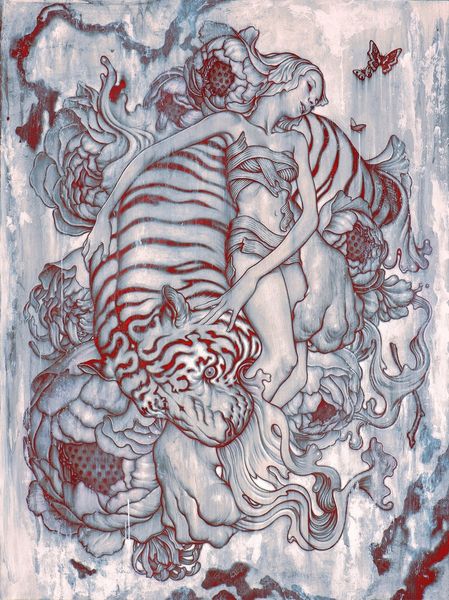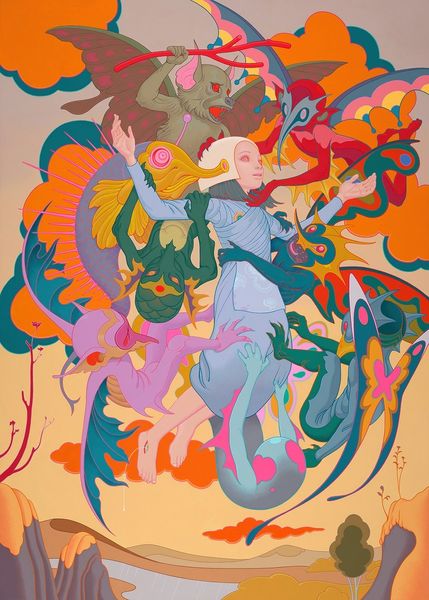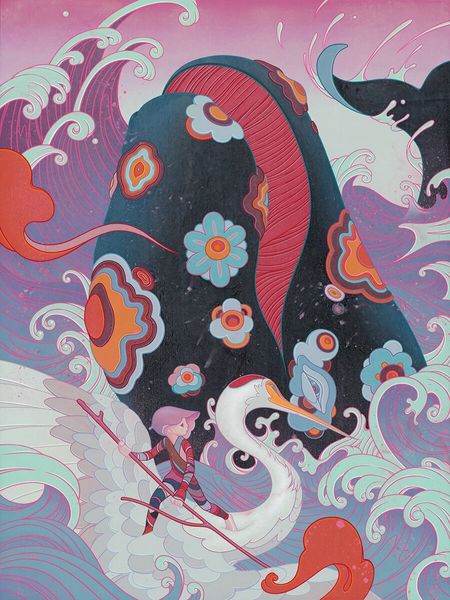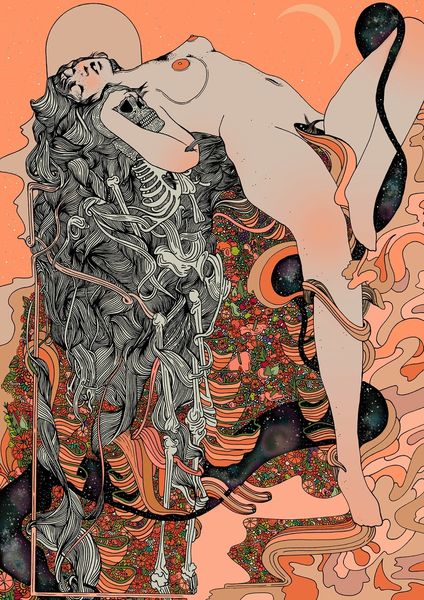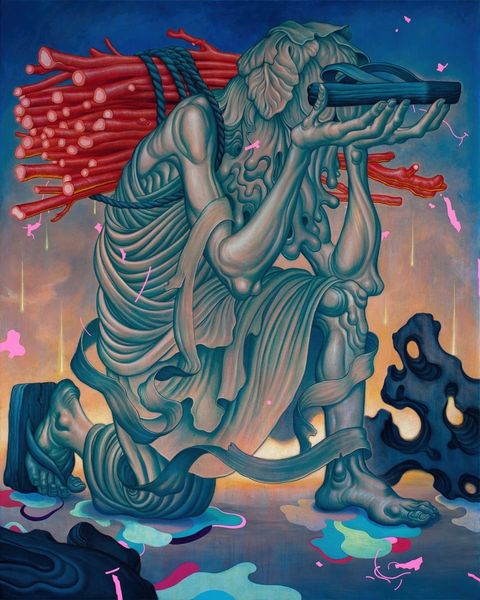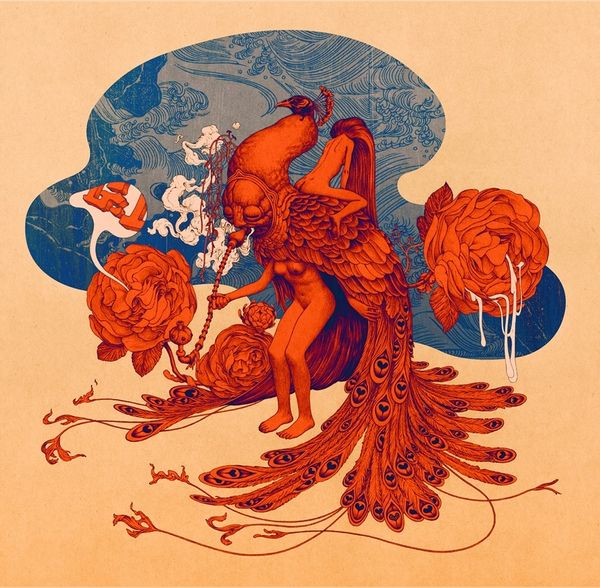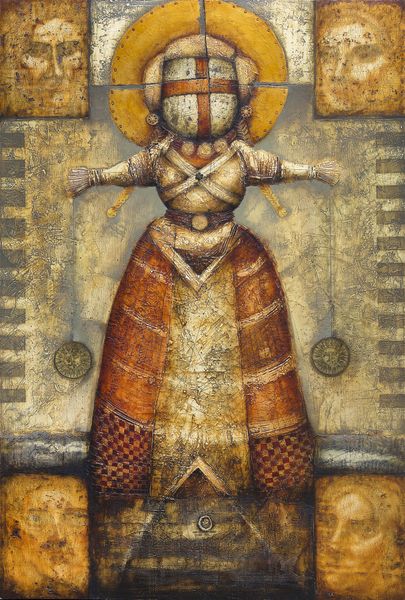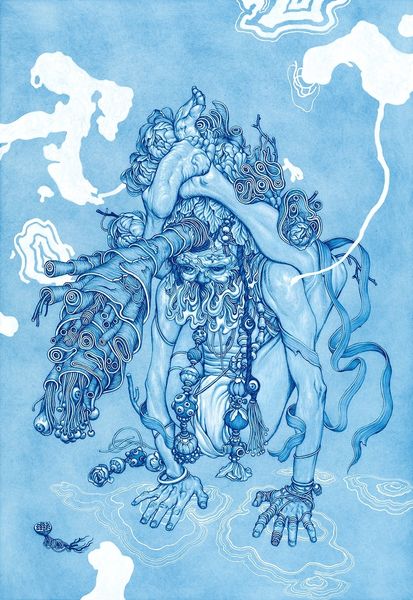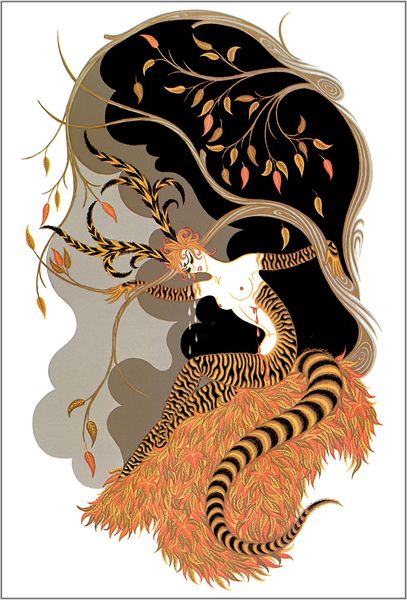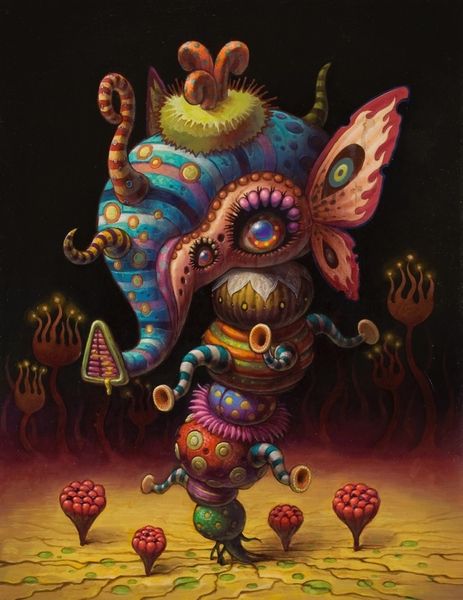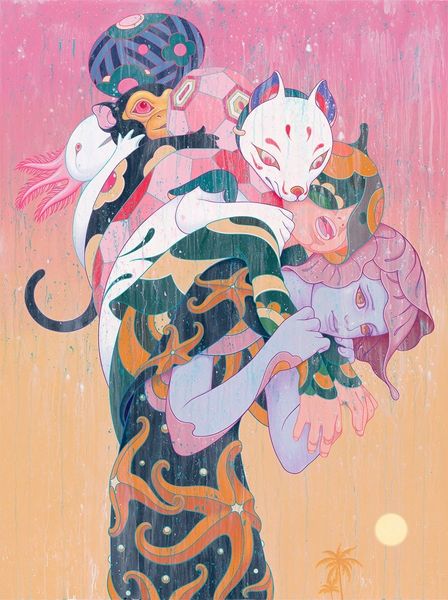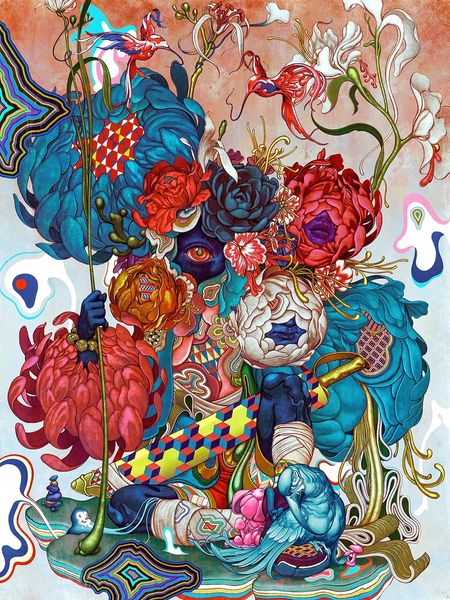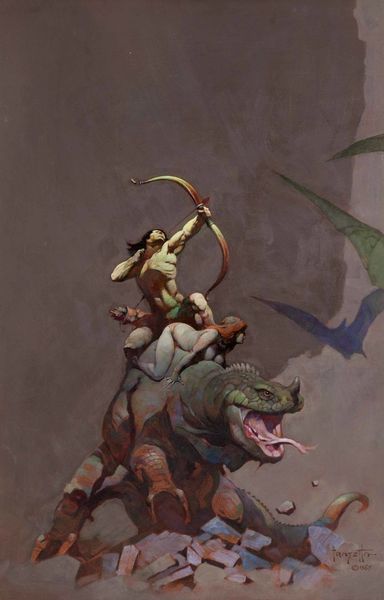
mixed-media, acrylic-paint
#
mixed-media
#
pop-surrealism
#
fantasy art
#
caricature
#
fantasy-art
#
acrylic-paint
#
figuration
#
acrylic on canvas
#
surrealism
#
surrealism
Copyright: Modern Artists: Artvee
Curator: Here we have "Mizu" by James Jean, a mixed-media piece from 2014 that blends acrylic paint with pop-surrealist elements. Editor: Immediately, the combination of the dark color palette, fantastical creature-assemblage, and figure perched precariously on the oil barrel evokes a strange feeling—simultaneously humorous and unsettling. Curator: It’s fascinating how Jean merges the hyperreal with the surreal. Note the central figure's construction: the alligator scales, the turtle shell forming a pauldron, the way those elements coalesce to create this almost-armored being. It draws upon a variety of materials, real and imagined, transforming into a coherent form. What do you make of it? Editor: The formal tension is incredible. The artist juxtaposes the smooth skin of the figure against the rough textures of the alligator and turtle, the organic forms playing off the rigid geometry of the oil barrel. It creates a real dynamism, a controlled chaos. It has its own syntax of combined forms that are juxtaposed unexpectedly. Curator: Right, and consider that barrel. The namesake “Mizu,” suggesting water, ironically labels what appears to be an oil drum. Given the subject's fantastical blending of animal attributes, isn’t Jean speaking to our reliance on rapidly depleting natural resources and the effect this all has on nature itself? Editor: I see your point about the ecological message, and while context matters, the careful consideration given to line work, color, and the composition's balance cannot be ignored. Take the color usage: blues and oranges contrast to enhance depth, and the placement of the sneakers gives the picture a grounding effect. It stabilizes the figure, but paradoxically also provides the image with an edgy, urban aesthetic that connects it to youth culture. Curator: Yes, by integrating street fashion with these bizarre and symbolic forms, Jean engages with a larger cultural dialogue of labor and capitalist critique through how our desire and need for materiality reshapes us—how the commodity affects its consumer and the consumer, the resource. Editor: I am reminded again that artistic intent does not negate the powerful visual harmony within the picture. The convergence of elements creates an arresting aesthetic experience. Curator: Precisely, that's a critical point to remember while considering how labor and production function as a process of the modern condition, affecting us on personal, communal, and environmental levels. Editor: Well, a perfect note to end on, reminding us that an artwork can stand on its own merit as a construction, as much as within our own critical frameworks.
